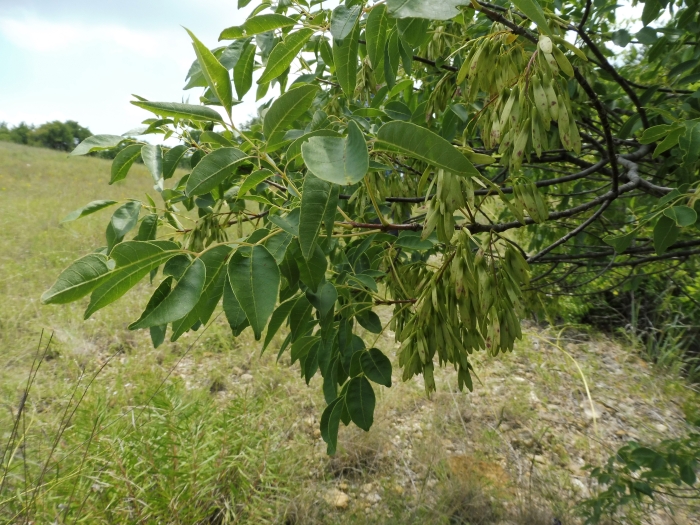Texas Ash
(Fraxinus texensis)
Texas Ash (Fraxinus texensis)
/
/

Mason Brock (Masebrock)
Public domain
Image By:
Mason Brock (Masebrock)
Recorded By:
Copyright:
Public domain
Copyright Notice:
Photo by: Mason Brock (Masebrock) | License Type: Public domain | License URL: https://creativecommons.org/public-domain/ | Uploader: Masebrock | Publisher: Wikimedia Commons | Title: Fraxinus_albicans.jpg | Notes: {{Information |Description={{en|[[:en:Snakeshead Fritillary|]], shot College, Oxford|]]. Author: [[:en:User:Miles_underwood | Miles Underwood]]}} |Source=Transferred from [http://en.wikipedia.org en.wikipedia]; transfer was stated to... |





























Estimated Native Range
Summary
Fraxinus texensis, commonly known as Texas Ash, is a deciduous tree native to limestone soils in the forested areas of the Edwards Plateau and Cross Timbers regions of Texas, as well as parts of Oklahoma and northeastern Mexico. It typically grows to a height of 30-39 feet (9-12 meters) and a width of 20-30 feet (6-9 meters), with a rounded crown that provides moderate shade. Texas Ash is notable for its dark green, compound leaves that turn a variety of brilliant colors in the fall, ranging from yellow to deep purple. The tree produces inconspicuous flowers in the spring, followed by samaras, or winged seeds, that are distributed by the wind.
Texas Ash is valued for its drought tolerance and stunning fall color, making it a popular choice for urban landscapes, residential gardens, and as a street tree in areas with limited space. It is adaptable to a range of soil types, provided they are well-drained, and it thrives in full sun to part shade conditions. While it is relatively low-maintenance, Texas Ash can be susceptible to diseases such as ash borers and fungal infections, which can be mitigated with proper care and monitoring. This species is less prone to the issues that affect other ashes, such as the invasive emerald ash borer, making it a more resilient choice for cultivation.CC BY-SA 4.0
Texas Ash is valued for its drought tolerance and stunning fall color, making it a popular choice for urban landscapes, residential gardens, and as a street tree in areas with limited space. It is adaptable to a range of soil types, provided they are well-drained, and it thrives in full sun to part shade conditions. While it is relatively low-maintenance, Texas Ash can be susceptible to diseases such as ash borers and fungal infections, which can be mitigated with proper care and monitoring. This species is less prone to the issues that affect other ashes, such as the invasive emerald ash borer, making it a more resilient choice for cultivation.CC BY-SA 4.0
Plant Description
- Plant Type: Tree
- Height: 30-39 feet
- Width: 20-30 feet
- Growth Rate: Rapid
- Flower Color: N/A
- Flowering Season: Spring
- Leaf Retention: Deciduous
Growth Requirements
- Sun: Full Sun
- Water: Low, Medium
- Drainage: Slow, Medium, Fast
Common Uses
Bee Garden, Bird Garden, Butterfly Garden, Fire Resistant, Hedges, Low Maintenance
Natural Habitat
Native to limestone soils in the forested areas of the Edwards Plateau and Cross Timbers regions of Texas, parts of Oklahoma, and northeastern Mexico
Other Names
Common Names: Texas White Ash
Scientific Names: , Fraxinus texensis, Fraxinus americana var. texensis, Fraxinus americana subsp. texensis, Fraxinus americana var. texenis,
GBIF Accepted Name: Fraxinus texensis (A.Gray) Sarg.